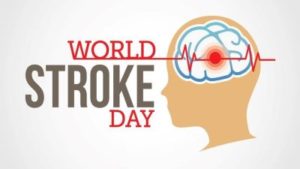 Did you know that 1 in 4 adults will have a stroke?
Did you know that 1 in 4 adults will have a stroke?
In honor of October 29th being World Stroke Day, Connections IN Health is spreading the word about stroke awareness.
KNOW:
We all must be prepared to recognize the signs and symptoms of strokes. The brain is under attack at every second of a stroke, so immediate action can have a lasting impact. Remember to “BE FAST”:
Balance Loss
Eyesight Loss
Facial Drooping
Arm Weakness
Speech Difficulty
Time to call 911
Though this acronym is helpful in identifying the common signs of a stroke, there are other equally important signs. A sudden onset of the following symptoms may indicate stroke:
- Confusion
- Difficulty Understanding
- Dizziness
- Loss of Balance
- Numbness
- Severe Headache
- Trouble Walking
- Vision Changes
- Weakness
Please note: these symptoms or a combination of them are not unique to stroke, but if they are sudden and out of the ordinary, they may indicate a sign of stroke and require immediate attention.
Educating yourself about stroke could be life changing. By knowing what a stroke is and if you or a loved one is at risk, you can be prepared when it’s time to act.
Who is at risk?
Stroke can happen to anyone at any time. There are a number of risk factors for stroke—some you can manage and some that are out of your control.
Risk factors that cannot be changed include:
- Age: Stroke can occur at any age; 1 out of 5 people who have a stroke are under 55 and your chance of stroke increases as you get older
- Race: Blacks, Hispanics, and Asian/Pacific Islanders have a higher risk of stroke than people of other races
- Gender: More women have stroke than men and more women die from stroke than from breast cancer every year
- Family history: You are at greater risk if a family member has had a stroke
Manageable risk factors include:
- High blood pressure
- Atrial fibrillation (A-fib)
- High cholesterol
- Smoking
- Diabetes
- Poor circulation
- Lack of physical activity
- Obesity
What is stroke?
Stroke is a brain attack. It occurs when blood vessels in the brain, called arteries, are blocked or burst. The consequences of stroke can be long-term disability and even death.
What happens during stroke?
Obstruction or damage to the arteries in the brain may prevent it from getting the necessary blood supply. This can cause brain cells to die, inflicting permanent damage. Depending on which part of the brain is damaged, an individual’s ability to speak, see, and move may become impaired. That’s why it is important to act immediately the moment you suspect stroke.
ACT:
Help spread stroke awareness! By having a conversation about stroke prevention, we can empower everyone to act without hesitation.
Urgency is key
Hesitation and fear cost time. As soon as you notice potential signs of stroke, call 911.
Action can make a difference
Know 10 signs of stroke. Act quickly. Stroke is serious. Suspicion is enough to take action.
They should pass it forward
More people in the US have strokes than heart attacks. Everyone should know how to identify signs of stroke.
For more information:
https://www.strokeawareness.com/
https://www.world-stroke.org/
